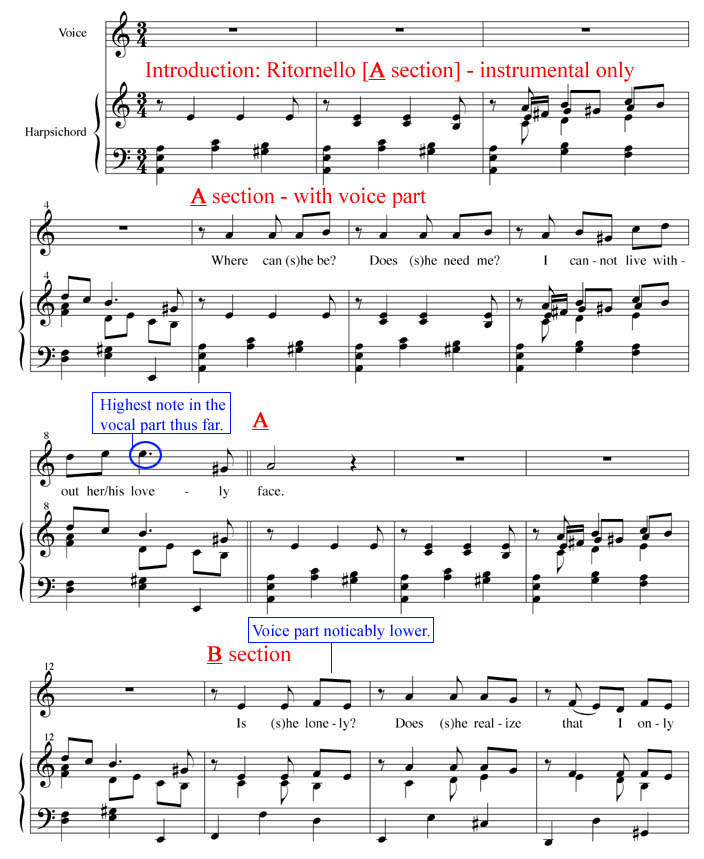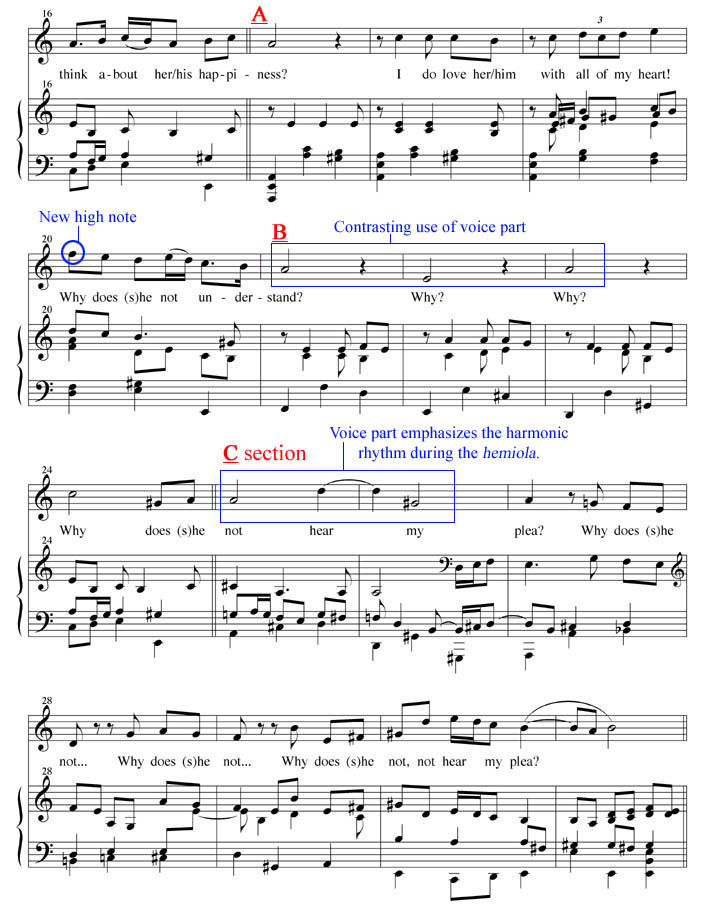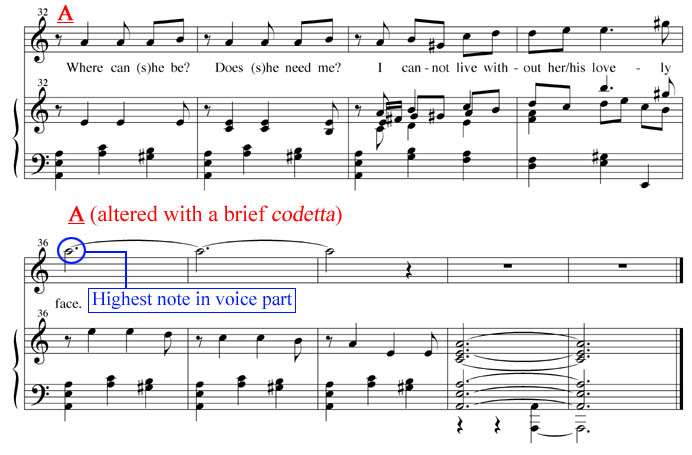5. Putting it all together. The following score will illustrate how we can take the three component sections we have composed separately and bring them together to form a cohesive piece. Of particular importance are the contrasting contours and high points of the vocal part as relative to each succeeding phrase (to create a heightened sense of drama). Note the use of metrical stresses to coincide with the natural sound of the text. As well, observe how the reiteration of certain passages of text supports an impression of urgency.
Formally, the piece can be summed up as a five-part rondo variant consisting primarily of a series of eight bar structures (each consisting of two four-bar phrases) with one irregular, asymmetrical section:
AA / AB / AB / C (seven bars) / AA (with codetta)
mp3 download (voice [flute] and harpsichord version)
mp3 download (voice [flute] strings and harpsichord version)
score download (of ensemble arrangement)





